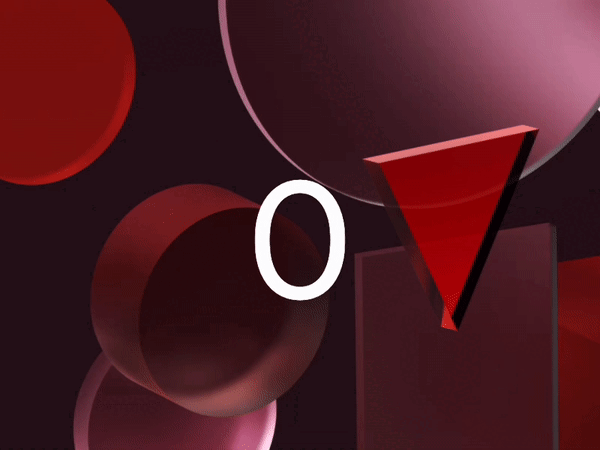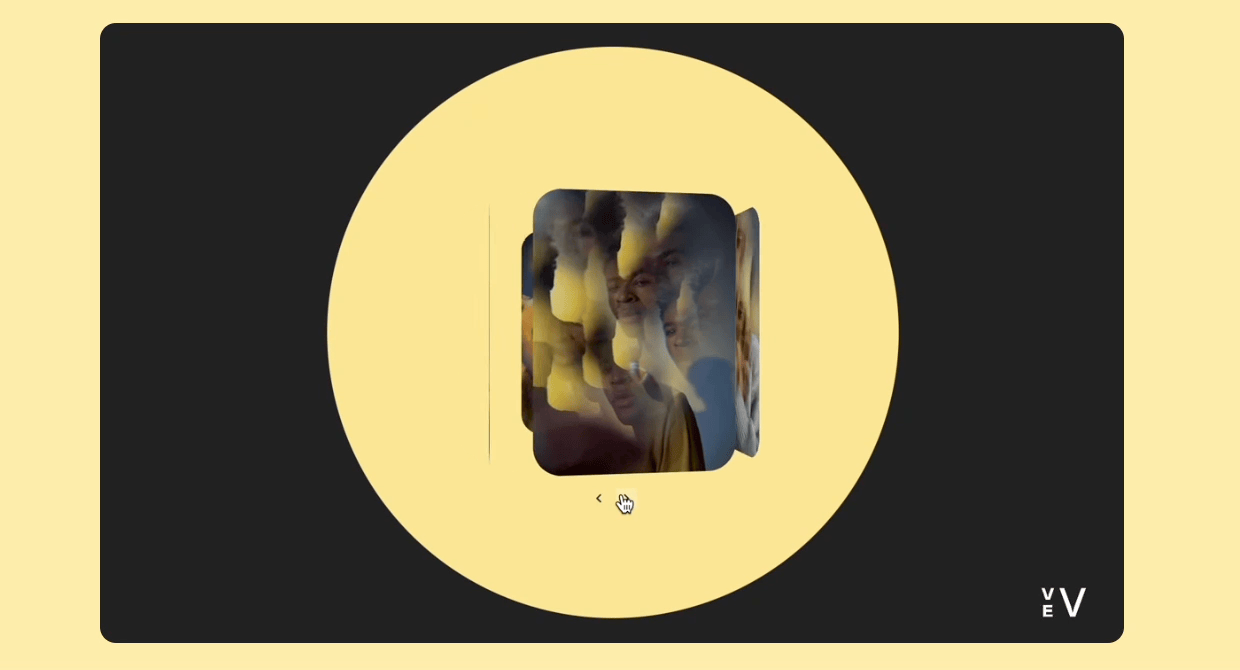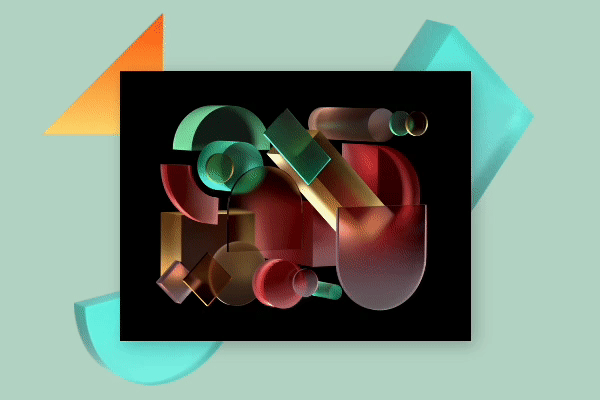5 Advertorial Design Ideas for Mastering Long-Form Marketing
November 8, 2022
Words by Selene Nelson
As the landscape for digital advertising changes, long-form content offers brands an unlikely opportunity.
Advertising is part and parcel of modern life, with studies suggesting that the average consumer sees between 6,000–10,000 ads every single day. In such an overwhelmingly oversaturated market, brands have to think of new ways to reach and impact audiences.
Increasingly, one of the best ways to do that on a more authentic level is to create long-form advertorials. But what exactly are they? Why should brands invest in "slow" long-form advertising over snappier traditional formats? And how can good advertorial design make or break your efforts?
What is an Advertorial?
The clue is in the name: "advertorial" is a play on words, merging "advertising" and "editorial". They’re basically adverts packaged as long-form editorial content. Their real purpose is to advertise or promote a product, service, or brand, but this intention is disguised, and the article usually looks like an educational, helpful piece of editorial content—at least at first glance.
It might seem strange that advertorials have become so effective in our current digital climate. After all, the modern attention span is apparently shorter than ever, and many of us live in a state of constant distraction, with multiple screens on the go. Yet this is precisely why advertorials work so well. At a time when clickbait content is everywhere, we’ve become desensitized to much of it. Most of us scroll past banner ads and close pop-up windows without even registering what they were about.
As well as this, humans are naturally drawn to content that’s meaningful and story-led. Many brands are now choosing to produce deliberately "slow" content to differentiate their brand—flying in the face of clickbait design to provide the reader with real value. Advertorials are designed to look like they belong in the same editorial publication they appear in, and often the marketing is so subtle that they don’t seem like ads at all.
Advertorial design must echo the authenticity of the written content.
The Importance of Advertorial Design
Of course, to pull off this kind of marketing, the content needs to look right. In the world of long-form content, hooking intrigue and engagement are essential. This makes advertorial design just as important as the content. It needs to be consistent with the brand’s identity while looking like an authentic piece of long-form content, designed in line with the design of the publication it sits within. Advertorial length needs to pique the reader’s interest, not put them off, and the overall design should strike the right balance between words and images: too many images can make it look like an ad; too little, and it can look like a report.
The good news is that finding that sweet spot might be easier than you think. Thanks to rapid advancements in web design and no-code web creation tools, nailing advertorial design is simpler than ever. Many of the most powerful visual storytelling techniques work just as effectively in advertorials as they do in other long-form content.
The key to good advertorial design is to not make it feel like an advertisement. Selling should be so subtle that the piece appears to be pure quality, valuable content. To do this, the advertorial design must echo the authenticity of the written content. Use visual storytelling techniques not to highlight a product or service, but to enhance the underlying focus and story you are telling.
Advertorial Design Techniques
Advertorial design has long been overlooked, and we believe it’s time for brands, agencies, and designers to give this content the attention it deserves. Here are some of the most successful advertorial design techniques to apply to your own creations.
Image Hotspots
If you’re working with an image, try working in clickable image hotspots. Clicking these hotspots causes an assigned element to pop up, serving your customers more information about your product or brand at their own pace.
Image hotspots are some of the most common advertorial design techniques within e-commerce. They’re great ways to add as much text as you like without obstructing your image, and to provide customers with relevant information. Plus, by adding interactive hotspots, you’re making static images more exciting and engaging. Check out this guide to add these to your project in Vev.

Scrollytelling
One of the most dynamic advertorial design techniques around, scrollytelling is a web design format that’s often used to tell immersive digital stories. A portmanteau of "scrolling" and "storytelling", it breathes life and movement into content, and lends advertorials an almost cinematic feel.
Using scrollytelling in your advertorial design allows readers to scroll up, down, or across at their own pace as new content elements are triggered. You can use videos, images, charts, animations and infographics in your ads, helping the content look more like a genuine long-form narrative than part of a marketing campaign.
Animated Text and Numbers
If you’d like to use animations in your advertorial design, chances are text isn’t the first thing you think about animating. But getting the text right is crucial for advertorials to work. Get it wrong, and readers might just write off the content as an ad and breeze on past.
Animated text, whether it’s used for headers, titles, or quotes, can be an excellent way to grab your visitors’ attention and get them hooked on your narrative. It brings energy and movement to what would otherwise be static text, and rewards readers with a far more dynamic, immersive experience. Animated number counters can also be used to visually stress quantative information.

Carousels
Image carousels have long been popular ways to display multiple images without taking up much room, and they’re a particularly common form of social media marketing. They’re also an effective advertorial design technique, and can help you tell a story in a far more engaging and compelling way.
Just like scrollytelling, carousels allow readers to navigate content at their own pace—and each time a user clicks or swipes on your images, they’ll reveal more of the story. Studies show that carousels aren’t only a good way to highlight multiple features, they also keep audiences engaged for longer.

Videos
Video is widely used in advertorial design, and for good reason. Video immediately transforms content, helping the narrative come to life and offering a completely different way to consume information.
You can use video in so many ways. Short video clips work well in scrollytelling and hero sections alongside minimalist text, while longer clips can be used to provide more complex information. Short, snappy vignettes can be studded through text-heavy sections, helping break up the content and make it seem more digestible.

5 Advertorial Design Examples
Theory covered—but how do other brands use these advertorial design principles and techniques in the wild? We've pulled together some of the best advertorial designs created by world-class publishers in Vev to show you the versatility and sheer power of advertorials.
Polestar
A great example of long-form advertorial design can be found in Swedish car manufacturer Polestar’s "The art of buying a car". This Vev-created campaign for their Norwegian audience combines scrollytelling, images, and video to great effect to produce an incredibly slick and stylish advertorial.
The text of the advertorial explores the relationship between art and automotive culture, equating the new Polestar model to a work of art you might hang proudly on the wall. While this might sound far-fetched, the images and overall art direction effortlessly reinforce this message.
It's worth noting the horizontal scrolling section, which suspends the vertical experience of the advertorial to display stunning photos of the interior and exterior of the car. This adds a new dimension to the advertorial design, and also draws attention to the photos—and, therefore, the product.
As the reader scrolls, videos of the Polestar play, showcasing the new model in all its shiny glory. Text boxes containing important information about the campaign also appear over photos as you scroll, and the images and videos are evenly broken up with written content. This advertorial design allows the content to appear as a stylish long-form photojournalism article, rather than an ad campaign.
BT
BT’s "Unlocking the future of work" published on The Economist is another great example of an advertorial that looks like a genuine educational long-form article. It examines the new world of hybrid work, and considers the role that technology plays in making remote work accessible.
This advertorial makes thoughtful use of animated number counters to highlight key statistics. This design choice underlines the data focus to this piece, signaling this is a valuable, insight-rich article. Pull quotes are also visually underlined throughout, giving the ad a journalistic feel.
The advertorial unfolds via classic scrollytelling techniques, and as the reader scrolls down, large, full-size images appear, pull quotes move across the screen, and animated number counters flash into action. Paired with the text, BT’s campaign is a good example of how subtle advertorial design can be, as it doesn’t appear to be an ad at all.
Mercedes Benz
Another very stylish example of advertorial design is Mercedes Benz’s compact electric SUV campaign. This highly visual scrollytelling advertorial uses videos, images, and GIFs to bring the campaign to life, animated text to grab the reader’s attention, and image hotspots to provide information.
The advertorial begins with full size videos of the new Mercedes Benz electric car. As the reader scrolls down, videos highlight how smart and innovative the car looks. The campaign follows a young family, and by including photos and videos of people driving the car and talking about their experiences with it, it gives the advertorial a more personal touch.
Pull quotes take the form of animated text, guiding the reader’s eyes to details Mercedes Benz wants to make sure they see. Image hotspots are also used to great effect: a photo of the electric car is dotted with hotspots, which reveal important facts about the car when clicked—from how fast it charges to how much luggage it can store.
Riksbyggen
Swedish housing company Riksbyggen published this advertorial in daily newspaper Aftonbladet to promote their new housing quarter, Cykelverkstaden. This long-form piece uses scrollytelling, photos, and image hotspots to provide the reader with both information and inspiration, while the text itself explores the concept of new meeting old.
As the reader scrolls down, full-size, color photos of the housing quarter slide into frame, allowing the reader to imagine what living there would look like. The accompanying text addresses Riksbyggen’s vision of furnishing new accommodation with second-hand furniture to improve sustainability and ambiance, and a photo of their stylist, Linnéa Salmén, helps to humanize the company.
Image hotspots are also used in the advertorial design. A full-size color photo of one of the apartments is dotted with image hotspots, which, when you click on them, reveals decorating tips and ideas, which helps the reader imagine putting their own spin on these apartments.
Spor
Our final example of an advertorial design created in Vev is Norwegian jewelry brand Spor’s campaign in VG newspaper. This beautiful piece of content combines images, videos, and scrollytelling to shine a light on their new collection, which is inspired by nature.
The beauty of the Norwegian countryside is captured in full-size color photos and videos, which unfold and play as the reader scrolls. The focus of the campaign is on apple farmer Ingrid Sekse, and the narrative looks like an authentic long-form interview. Text boxes are broken up by frequent images, which stops this long piece of content from seeming overwhelming.
And of course, this is a jewelry campaign, so there are also plenty of images of the jewelry itself. Smaller images appear together in a line, rather like a carousel, and clicking on the images takes you to the shopping section of the site. Parallax scrolling and rotating images are used to make the jewelry almost pop out of the screen, bringing the collection to life and grabbing the viewer’s attention.
Create Your Own Stunning Advertorial Design
Want to create your own compelling advertorial design? Our pre-coded digital storytelling components—like video scrollytelling, image carousel, horizontal scrolling, and image hotspots—make it easier than ever to create engaging, immersive long-form articles. Publish your content anywhere on the web when you're ready, including to a partner's CMS.
Want More Inspo?
Get our monthly newsletter straight to your inbox.
You can always unsubscribe at any time.
Privacy Policy



















